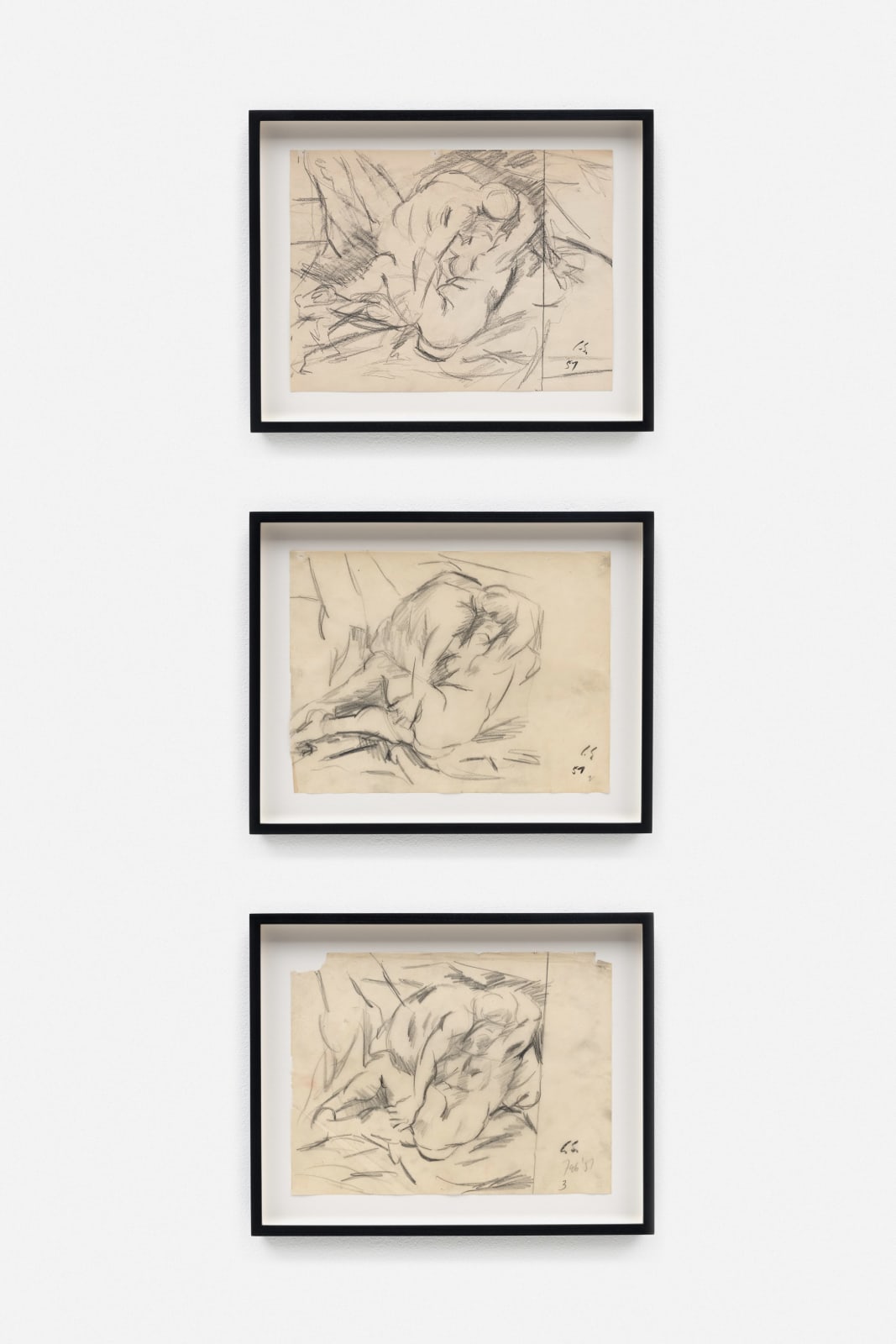
Carolee Schneemann
Untitled, 1957
Graphite on paper in three (3) parts
Each: 22.9 x 30.3 cm
9 x 11 7/8 in
Framed (each): 30 x 37.6 x 3.9 cm
11 3/4 x 14 3/4 x 1 1/2 in
9 x 11 7/8 in
Framed (each): 30 x 37.6 x 3.9 cm
11 3/4 x 14 3/4 x 1 1/2 in
Schneemann examined themes of sexuality, identity and gender through painting, performance, installation and photography. In much of her work, Schneemann explored her own identity as a woman in a patriarchal...
Schneemann examined themes of sexuality, identity and gender through painting, performance, installation and photography. In much of her work, Schneemann explored her own identity as a woman in a patriarchal society. All of Schneemann’s work is rooted in her formal training, and throughout her career she insisted on being thought of as a painter. By connecting the kinetic nature of her paintings and assemblages to her radical performances and films, Schneemann’s work has made a permanent mark on the history of art.
These graphite drawings were made at a critical period of intellectual and artistic growth, the works demonstrate the importance of the act of drawing—of drawing as action—that would remain constant. A study of a couple in an embrace, the work is charged with energy and sexuality.
These graphite drawings were made at a critical period of intellectual and artistic growth, the works demonstrate the importance of the act of drawing—of drawing as action—that would remain constant. A study of a couple in an embrace, the work is charged with energy and sexuality.